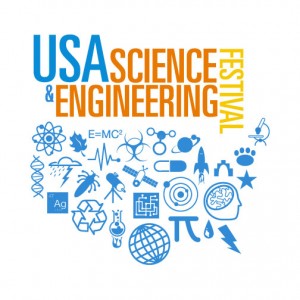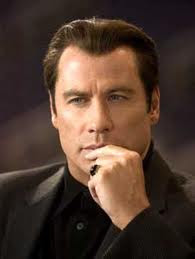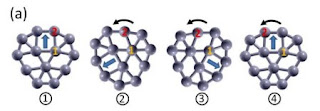FIRST = For Inspiration and Recognition of Science and Technology, also this weekend!
Look @ the odds (being a professional athlete). STEM careersare by far the greater need.
Website: USFirstdotorg
FIRST = For Inspiration and Recognition of Science and Technology, also this weekend!
Look @ the odds (being a professional athlete). STEM careersare by far the greater need.
Website: USFirstdotorg
...it's THIS weekend:
 |
| Science Blog |
Click the link below for satellite events. You owe it to your kids...and their futures.
 |
| Science Channel |
Site: USAScienceFestivaldotorg
| Dilbertdotcom |
 |
| Credit: AIP-Lead-in Photo |
CNN Light Years: NASA: Meteor over California and Nevada was size of minivan
30,000,000 years of Tritium!
...minus Chili Palmer!
 |
| LASplashdotcom |
 |
| Dirac Cones - PhysicsWorld |
Physics World: Dirac cones could exist in bismuth–antimony films
 |
| German artist Alexander Preuss, Ufunkdotnet |
By blending creativity and innovative technological advancements, Walt Disney Imagineering has produced some of the world's most distinctive experiential storytelling... more at the site.
Call it "Dreaming Dreams," part II, and a help to teachers instructing science:
Scoopdotit: Using Science Fiction to Teach Science
Prior to Majorana's work, Austrian physicist Erwin Schrödinger came up with an equation that describes how quantum particles behave and interact. Paul Dirac, an English physicist, tweaked that equation to apply it to fermions, such as electrons, moving at near-light speed. That work tied together quantum mechanics and Einstein's special theory of relativity. It also implied the existence of antimatter, where every particle has an antimatter counterpart—such as electrons and positrons—and that the two would annihilate each other if they ever met. Dirac's work suggested that some particles, such as photons, could serve as their own antiparticles. But fermions weren't thought to be among them. It was Majorana's manipulations of Dirac's equations that suggested the possible existence of a new type of fermion that could serve as its own antiparticle.
Science Mag: Physicists Discover New Type of Particle--Sort Of
...a fictional one, a dear literary memory so we will not become "smooth dinosaurs" (Octavia Butler, "Parable of the Sower"; "Parable of the Talents").
Web site: The B612 Foundation
The Little Prince: Asteroid B-612
One day I was playing with the Ford coil, punching holes in paper with the sparks, and the paper caught on fire. Soon I couldn't hold it any more because it was burning near my fingers, so I dropped it in a metal wastebasket which had a lot of newspapers in it. Newspapers burn fast, you know, and the flame looked pretty big inside the room. I shut the door so my mother--who was playing bridge with some friends in the living room--wouldn't find out there was a fire in my room, took a magazine that was lying nearby, and put it over the wastebasket to smother the fire.
After the fire was out I took the magazine off, but now the room began to fill up with smoke. The wastebasket was still too hot to handle, so I got a pair of pliers, carried it across the room, and held it out the window for the smoke to blow out.
But because it was breezy outside, the wind lit the fire again, and now the magazine was out of reach. So I pulled the flaming wastebasket back in through the window to get the magazine, and I noticed there were curtains in the window--it was very dangerous!
Well, I got the magazine, put the fire out again, and this time kept the magazine with me while I shook the glowing coals out of the wastepaper basket onto the street, two or three floors below. Then I went out of my room, closed the door behind me, and said to my mother, "I'm going out to play," and the smoke went out slowly through the windows.
Surely You're Joking, Mr. Feynman, Part 1: From Far Rockaway to MIT: He Fixes Radios by Thinking!
NobelPrizedotorg: Richard P. Feynman
Washington Post: Shuttle Flies Over Washington DC
Kepler...and Tatooine. They went there. 
The Christian Science Monitor: NASA's Kepler observatory to continue hunt for strange new worlds
Described in the April 5, 2012, issue of Nature,* the JILA laser prototype relies on a million rubidium atoms doing a sort of synchronized line dance to produce a dim beam of deep red laser light. JILA is a joint institute of the National Institute of Standards and Technology (NIST) and the University of Colorado Boulder (CU).
JILA/NIST physicist James Thompson says the new laser is based on a powerful engineering technique called "phased arrays" in which electromagnetic waves from a large group of identical antennas are carefully synchronized to build a combined wave with special useful features that are not possible otherwise.
NIST: JILA Team Demonstrates 'A New Way of Lasing': A 'Superradiant' Laser
 |
| Technology Review |
That's triggered more than a little green-eyed jealousy from physicists and engineers who would like to have molecular machines at their own beck and call. So there's no small interest in developing molecular devices that can be easily harnessed to do the job.
Today, Jin Zhang at the University of California Los Angeles and a few pals say they've identified a machine that fits the bill.
A couple of year ago, chemists discovered that groups of 13 or 19 boron molecules form into concentric rings that can rotate independently, rather like the piston in a rotary Wankel engine. Because of this, they quickly picked up the moniker "molecular Wankel engines". The only question was how to power them.
Physics arXiv: Photo-driven Molecular Wankel Engine, B13+
 |
| Matthew J. Laznicka - Popular Mechanics |
Read more: Why We Need Big, Bold Science Fiction - Popular Mechanics
See also: FutureMorphdotorg
 High-gain nuclear fusion could be achieved in a preheated cylindrical container immersed in strong magnetic fields, according to a series of computer simulations performed at Sandia National Laboratories.
High-gain nuclear fusion could be achieved in a preheated cylindrical container immersed in strong magnetic fields, according to a series of computer simulations performed at Sandia National Laboratories.The simulations show the release of output energy that was, remarkably, many times greater than the energy fed into the container's liner. The method appears to be 50 times more efficient than using X-rays—a previous favorite at Sandia—to drive implosions of targeted materials to create fusion conditions.
"People didn't think there was a high-gain option for magnetized inertial fusion (MIF) but these numerical simulations show there is," said Sandia researcher Steve Slutz, the paper's lead author. "Now we have to see if nature will let us do it. In principle, we don't know why we can't."
High-gain fusion means getting substantially more energy out of a material than is put into it. Inertial refers to the compression in situ over nanoseconds of a small amount of targeted fuel.
April 15this the day! Countdown at the link below.
Or...you can commiserate over your taxes (ahem: like me). 
More at: PhDComicsdotcom/movie